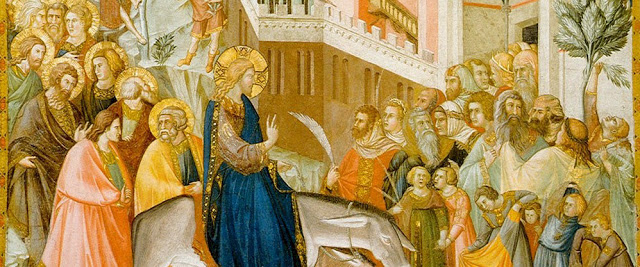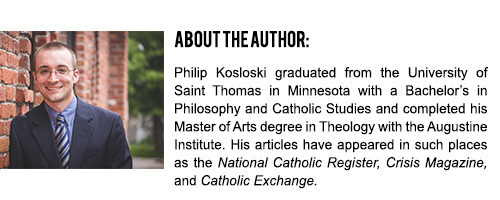|
Near the conclusion of Lent we enter into the holiest week of the year: Holy Week. Starting with Palm Sunday, the Church focuses our attention on the passion, death and resurrection of Christ.
Holy Week closely follows the Gospel narrative and we are immersed into the final week of Jesus' mortal life. Beginning with Palm Sunday, we walk closely behind Jesus and observe his every move. The Catechism explains the significance of this episode, "How will Jerusalem welcome her Messiah? Although Jesus had always refused popular attempts to make him king, he chooses the time and prepares the details for his messianic entry into the city of "his father David". Acclaimed as son of David, as the one who brings salvation (Hosanna means "Save!" or "Give salvation!"), the "King of glory" enters his City "riding on an ass". Jesus conquers the Daughter of Zion, a figure of his Church, neither by ruse nor by violence, but by the humility that bears witness to the truth. And so the subjects of his kingdom on that day are children and God's poor, who acclaim him as had the angels when they announced him to the shepherds.Their acclamation, "Blessed be he who comes in the name of the Lord", is taken up by the Church in the "Sanctus" of the Eucharistic liturgy that introduces the memorial of the Lord's Passover. Jesus' entry into Jerusalem manifested the coming of the kingdom that the King-Messiah was going to accomplish by the Passover of his Death and Resurrection. It is with the celebration of that entry on Palm Sunday that the Church's liturgy solemnly opens Holy Week. (559-560) During this special liturgy, we listen attentively to the Passion Narrative and even participate ourselves by taking the role of the crowd. In doing so, we recognize that Jesus died for us and the fruit of His action 2,000 years ago was not limited to the people of Jerusalem, but has been applied to all peoples and places for all human history. As we progress through Holy Week, we come upon Holy Thursday, where we commemorate the institution of the Holy Eucharist at the Last Supper. Traditionally it is on this day that priests renew their vows at the Chrism Mass at the local cathedral. This links the two days and shows how Jesus instituted the Holy Priesthood on that day. We then join Jesus after the evening Mass and spend at least an hour with Him before the Blessed Sacrament. This unites us with Jesus in the Garden of Gethsemane, where His own disciples fell asleep while He prayed. We seek to comfort Jesus in His sorrow and wait in prayer for the fateful day of His crucifixion. On Good Friday, Mass is not celebrated. The service held on Good Friday is a continuation of the Holy Thursday Mass and the solemn nature of service reflects the mournful tone of the day. We again hear the Passion Narrative and then venerate the wood of the cross. In some traditions, a tomb is erected in the church and the body of Jesus is laid to rest. All of these signs, symbols and activities allow us the opportunity to spiritually feel the hurt and pain of Jesus' passion. However, the sorrow of Good Friday does not have the last say. Next week we will see how the Easter Vigil overcomes the sadness we felt and brings us to the joys of the Resurrection. Read the Entire Series
0 Comments
Your comment will be posted after it is approved.
Leave a Reply. |
MASS SCHEDULE
Tuesday - Friday: 8:00 AM Saturday: 4:00 PM Sunday: 8:00 AM & 10:00 AM RECONCILIATION
Saturday: 3:15 - 3:45 PM OFFICE HOURS
Monday - Thursday: 8:30 AM – 5:00 PM Friday: 8:30 AM – 12:30 PM Stay Connected with Our ParishWelcome from Our PastorWelcome to Christ the King Catholic Church! Ever since 1938 this parish has been assisting souls in their quest for deeper union with God. Our mission statement is essentially found in the stained glass window above the main altar: “For Christ our King.” Insofar as God made us and we belong to Him, we have come to... Read More
Archives
February 2021
Categories
All
|
Copyright © 2024 Christ the King Parish. All Rights Reserved.
Mailing address: 306 S. LaSalle St, Spencer, WI 54479
(715) 659-4480




 RSS Feed
RSS Feed